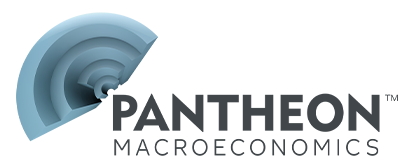US Publications
Below is a list of our US Publications for the last 5 months. If you are looking for reports older than 5 months please email info@pantheonmacro.com, or contact your account rep
Please use the filters on the right to search for a specific date or topic.
- ADP’s private payroll numbers are a woeful guide to the official data; even back-to-back low prints offer no signal.
- As a result, we are maintaining our forecast for a 125K increase in nonfarm payrolls in May.
- QCEW data imply big downward revisions to payrolls, but mostly because they exclude unauthorized workers.
We doubt services inflation will reaccelerate sharply.
- Construction spending has dropped significantly in recent months, a trend we expect to continue…
- …Falling spending points to small but sustained declines in construction payrolls ahead.
- Auto sales plunged by 9.4% in May, signalling the broader wave of pre-tariff purchases is now fading.
- The JOLTS participation and response rates are very low; downward revisions have been common lately.
- Other indicators point to fading demand for new hires; at the same time layoffs are starting to rise.
- Several “soft” data series have reversed their April plunges, providing some reassurance about activity.
Manufacturing remains under pressure.
- We look for a 125K rise in May payrolls; the surge in distribution sector jobs likely has petered out...
- ...While the most reliable survey indicators show that rising uncertainty has weighed on hiring.
- Continuing claims data point to another rise in unemployment, increasing pressure on the FOMC to ease.
Cracks starting to show in the labor market.
Net trade and inventories on course for a big combined boost to headline GDP in Q2.
Consumption still resilient, but a slowdown looms.
- Consumers’ spending is on track for respectable growth in Q2, but a sharper slowdown looms...
- ...As tariff-induced prices increases push up core PCE inflation, weighing on real incomes.
- Tariff-related distortions to the trade and inventories likely will artificially boost Q2 GDP growth.
STAGNATION AHEAD, AS THE TARIFFS HIT REAL INCOMES…
- …THE FED WILL START EASING IN Q3 AS PAYROLL GAINS SLOW
